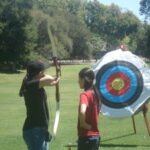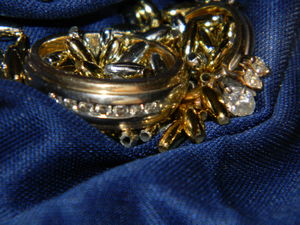It’s strange how some aspects of hunting are reversing themselves. Thousands of years ago a simple spear was the top of the line weapon for acquiring the meat that made life possible. After the demise of the gigantic paleo era beasts the weapon of choice became the bow and arrow. Nobody knows exactly when the first bows came into use or developed them but all over the world they were made in different style and of different materials.
Fortunately, many examples of this ancient weapon have been preserved to be studied and tested. While some have been discovered in bogs in Denmark others were retreived from sunken ships or preserved in tombs of Egyptian kings. Many of these bows were very powerful even by today’s standards. While the majority of these bows were constructed of wood, others used antlers, reeds, or lamination to achieve the desired results.
For me the true hunting experience has brought me from shooting at long range with a high powered rifle and scope, to making my own bow and arrows along with the string and other accessories. The time between the two completely different techniques included black powder hunting with a fifty caliber Hawken with iron sights. Also hunting with recurve and compound bows gave a new slant to different hunting strategies. You have to be close for a bow shot.
A traditional bow hunter is one of a rare breed. It’s not just about killing an animal for the freezer or it’s horns. Usually a person who really gets into this sport has a great appreciation of history and survival in the wild. Sure, bagging a massive trophy whitetail with a bow that you made yourself is a thrill unforgotten, but even a doe is an accomplishment to be proud of.
The most common type of bow and the easiest to make is the self bow. This is the standard D shaped bow with no curves on the end. Even lacking the energy producing curves of the recurve, a draw strenght of fifty pounds isn’t hard to achieve. Here in the U.S. orangewood was the favored wood with hickory, locust, oak, and a variety of other woods depending on availability. Of course you can order your choice ffrom suppliers but cutting your own has it’s own satisfaction.
The best resource I know for learning to make your own bow is The Bowyer’s Bible. This great instructional series tells you everything you need to know about constructing your own bow. From cutting the wood from the wild, to making your own string and other accessories, it is a wealth of information for the beginner. Even if you don’t hunt, being able to construct a working bow may contribute to your survival capabilities. You would be amazed at how easy it is to make an emergency bow for a weapon or to catch game when you know the basics of bow making.
There’s almost a magical feeling when you bag your first deer by traditional bow. It is a feeling of relief almost. Maybe it’s the same feeling our ancestors had when they knew they could eat for a while. That they were good enough to survive.




